Abstract
The multiaxial stress of turgor pressure was stimulated in vitro by inflating isolated Nitella cell walls with mercury. The initial in vitro extension at pH 6.5, 5 atmospheres pressure, returned the wall approximately to the in vivo stressed length, and did not induce any additional extension during a 15-minute period. Upon release of pressure, a plastic deformation was observed which did not correlate with cell growth rates until the final stages of cell maturation. Since wall plasticity does not correlate with growth rate, a metabolic factor(s) is implicated. Walls at all stages of development exhibited a primary yield stress between 0 and 2 atmospheres, while rapidly growing cells (1-3% per hour) exhibited a secondary yield stress of 4 to 5 atmospheres. The creep rate and plastic deformation of young walls were markedly enhanced by acid buffers (10 millimolar, pH ≤ 5.3).
Nitella cells produce acid and base “bands” along their length due to localized excretion of protons and hydroxyl ions. Marking experiments showed that growth is largely restricted to the acid regions. Growth in the acid bands was inhibited by alkaline buffers, and growth in the base bands was stimulated by acidic buffers. The two zones have similar mechanical properties. When the proton-binding capacity of the wall was taken into account, the pH of the solution in contact with inner wall surface in the acid band was estimated to be about 4.3, well within the threshold of acid-enhanced creep. Since the inner 25% of the wall controls extensibility, we conclude that growth in the acid band is caused by the action of protons on the wall.
Full text
PDF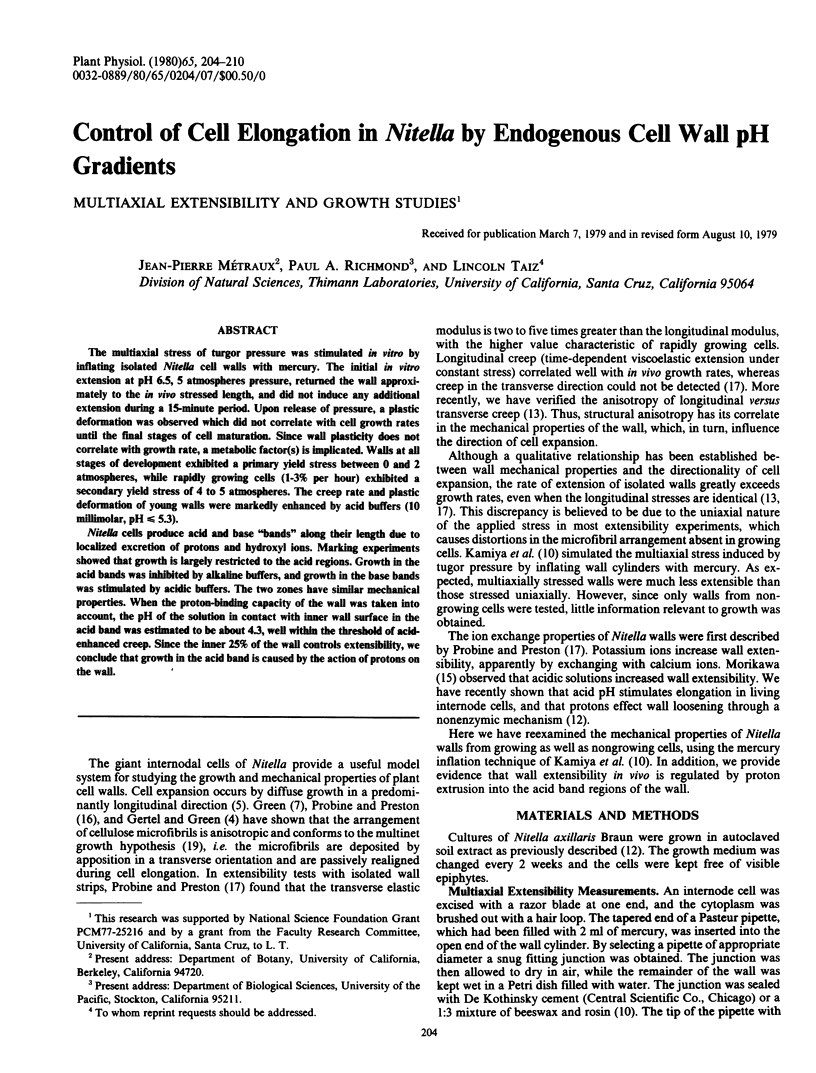
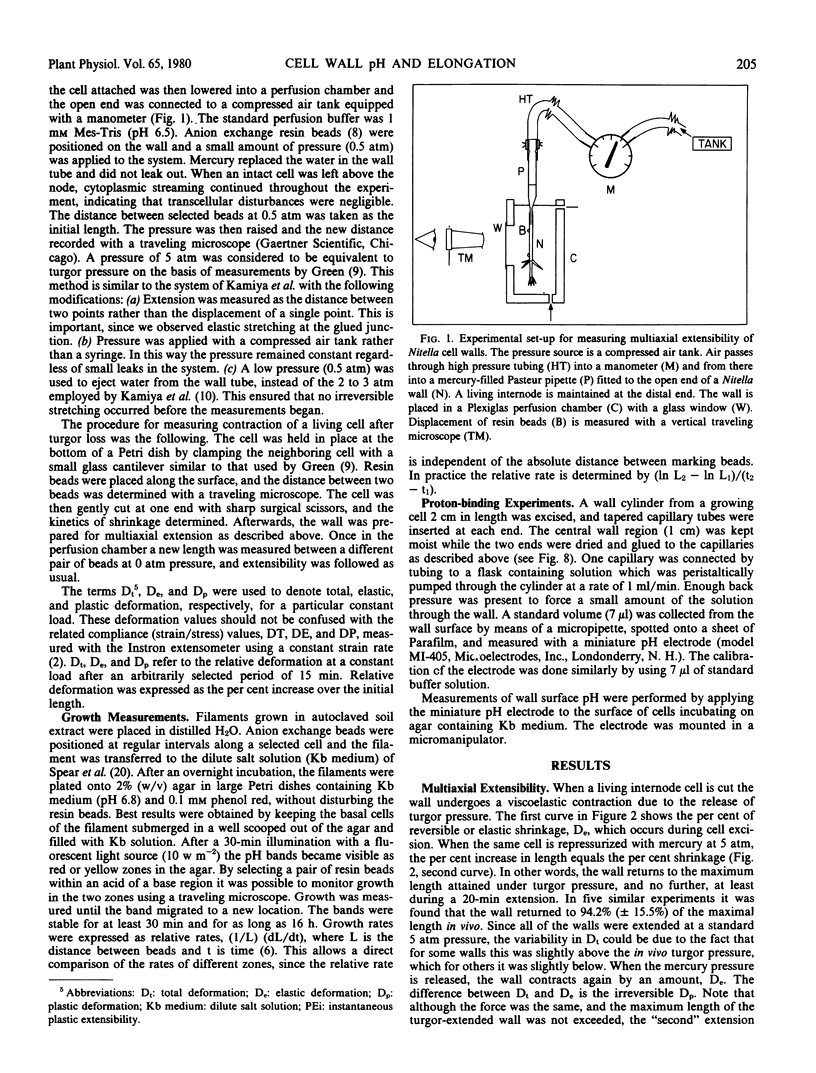
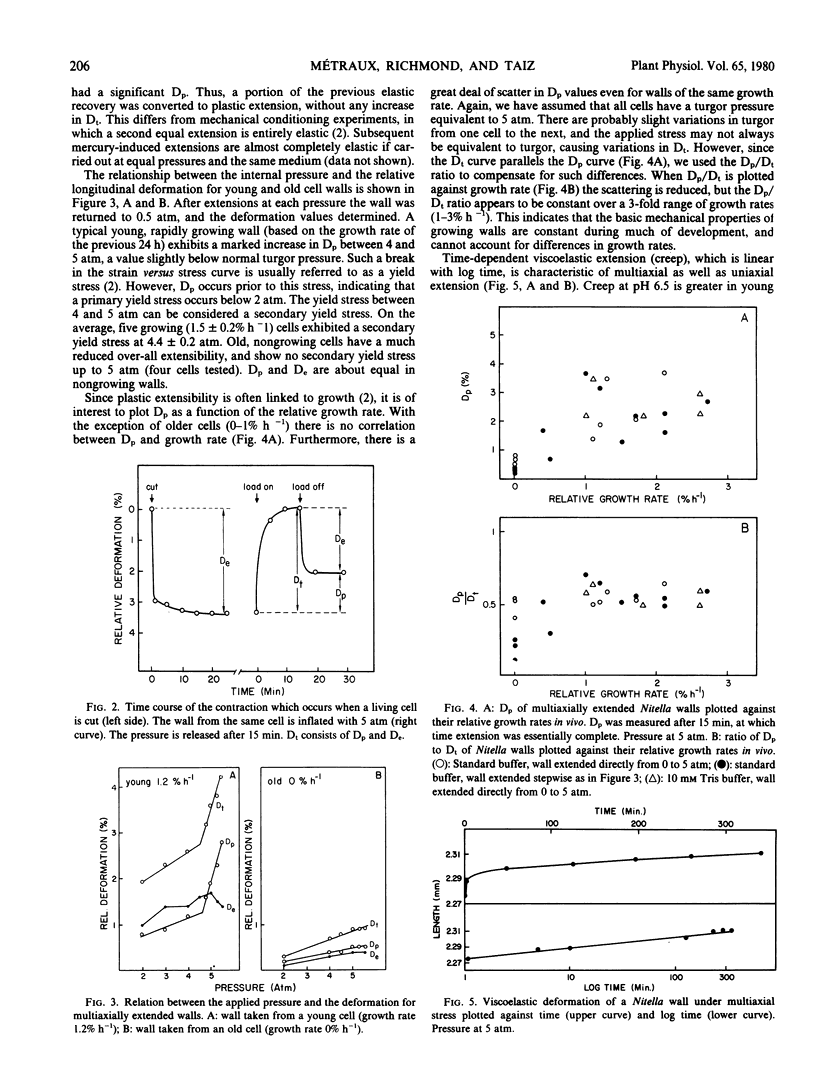

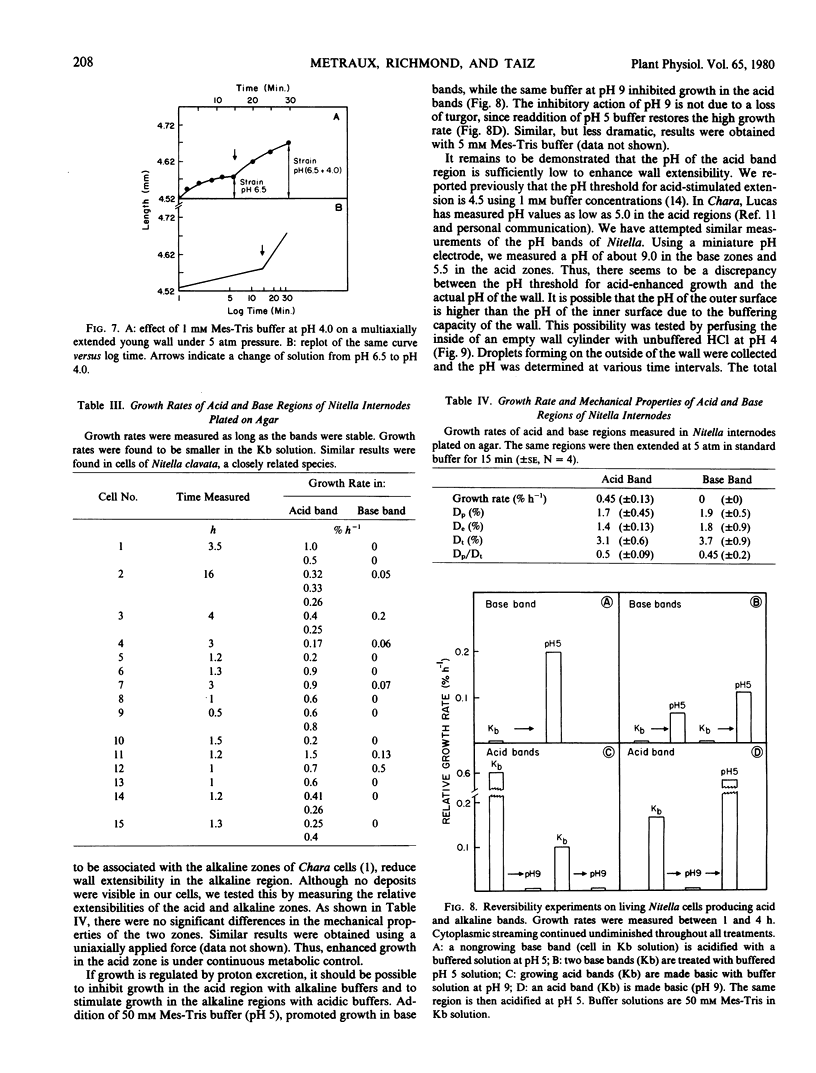
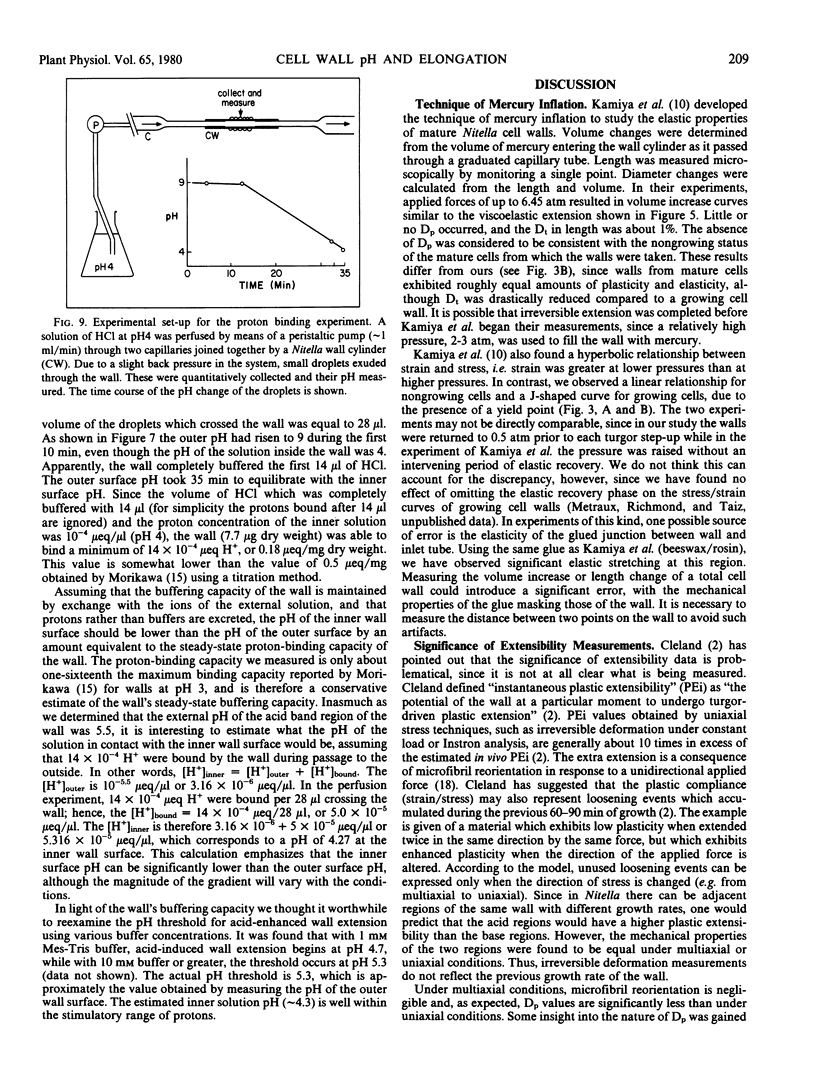
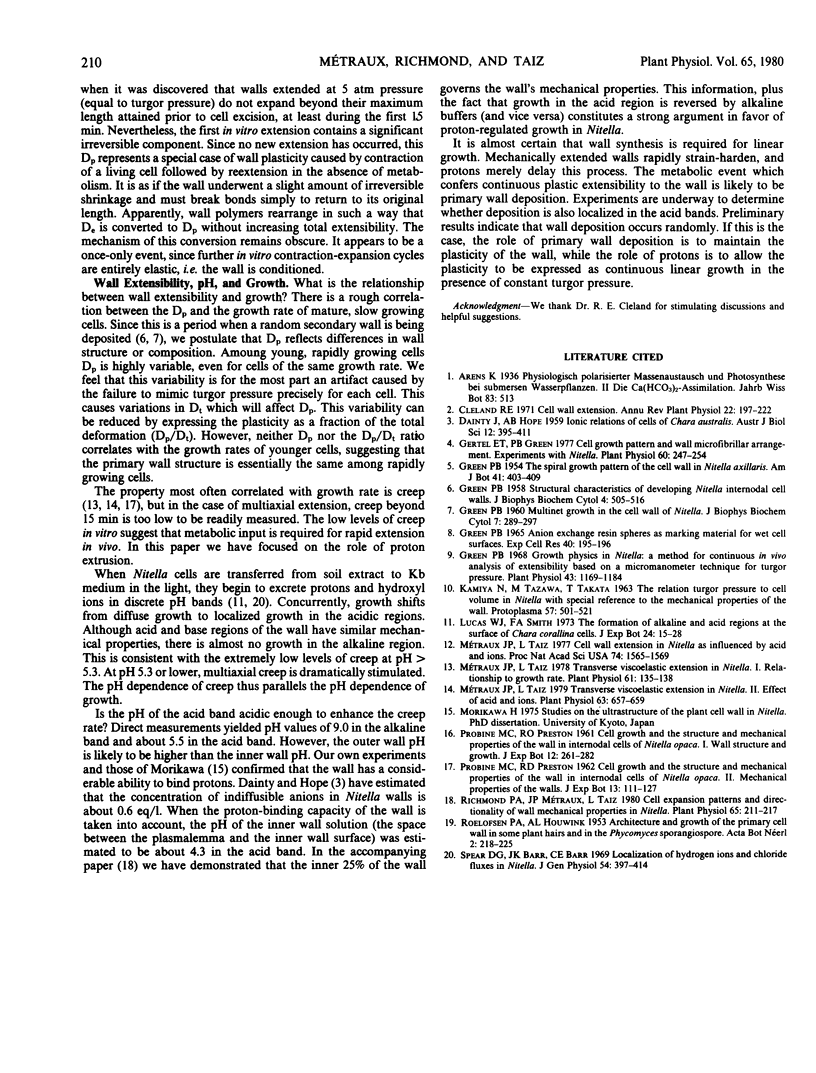
Selected References
These references are in PubMed. This may not be the complete list of references from this article.
- GREEN P. B. Multinet growth in the cell wall of Nitella. J Biophys Biochem Cytol. 1960 Apr;7:289–296. doi: 10.1083/jcb.7.2.289. [DOI] [PMC free article] [PubMed] [Google Scholar]
- GREEN P. B. Structural characteristics of developing Nitella internodal cell walls. J Biophys Biochem Cytol. 1958 Sep 25;4(5):505–515. doi: 10.1083/jcb.4.5.505. [DOI] [PMC free article] [PubMed] [Google Scholar]
- Gertel E. T., Green P. B. Cell growth pattern and wall microfibrillar arrangement: experiments with nitella. Plant Physiol. 1977 Aug;60(2):247–254. doi: 10.1104/pp.60.2.247. [DOI] [PMC free article] [PubMed] [Google Scholar]
- Green P. B. Anion-exchange resin spheres as marking material for wet cell surfaces. Exp Cell Res. 1965 Oct;40(1):195–196. doi: 10.1016/0014-4827(65)90315-0. [DOI] [PubMed] [Google Scholar]
- Green P. B. Growth Physics in Nitella: a Method for Continuous in Vivo Analysis of Extensibility Based on a Micro-manometer Technique for Turgor Pressure. Plant Physiol. 1968 Aug;43(8):1169–1184. doi: 10.1104/pp.43.8.1169. [DOI] [PMC free article] [PubMed] [Google Scholar]
- Métraux J. P., Taiz L. Cell wall extension in Nitella as influenced by acids and ions. Proc Natl Acad Sci U S A. 1977 Apr;74(4):1565–1569. doi: 10.1073/pnas.74.4.1565. [DOI] [PMC free article] [PubMed] [Google Scholar]
- Métraux J. P., Taiz L. Transverse Viscoelastic Extension in Nitella: II. Effects of Acid and Ions. Plant Physiol. 1979 Apr;63(4):657–659. doi: 10.1104/pp.63.4.657. [DOI] [PMC free article] [PubMed] [Google Scholar]
- Métraux J. P., Taiz L. Transverse viscoelastic extension in nitella: I. Relationship to growth rate. Plant Physiol. 1978 Feb;61(2):135–138. doi: 10.1104/pp.61.2.135. [DOI] [PMC free article] [PubMed] [Google Scholar]
- Richmond P. A., Métraux J. P., Taiz L. Cell expansion patterns and directionality of wall mechanical properties in nitella. Plant Physiol. 1980 Feb;65(2):211–217. doi: 10.1104/pp.65.2.211. [DOI] [PMC free article] [PubMed] [Google Scholar]
- Spear D. G., Barr J. K., Barr C. E. Localization of hydrogen ion and chloride ion fluxes in Nitella. J Gen Physiol. 1969 Sep;54(3):397–414. doi: 10.1085/jgp.54.3.397. [DOI] [PMC free article] [PubMed] [Google Scholar]


